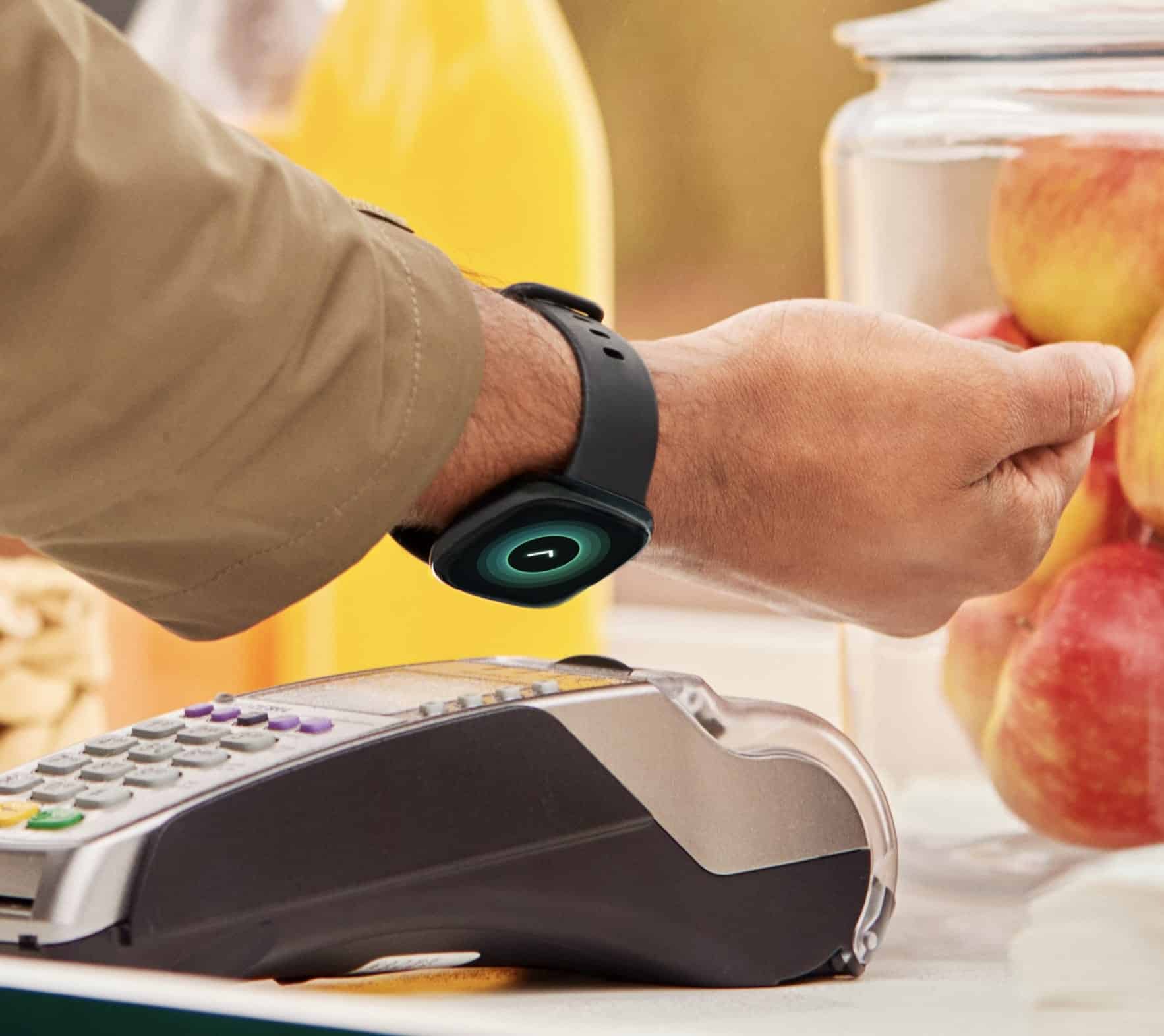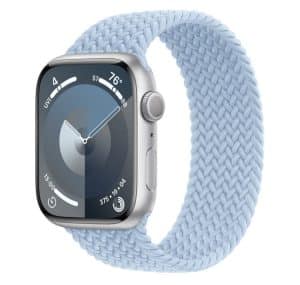With the integration of payment capabilities into wearable devices, such as fitness bands, smartwatches, jewelry, and even clothing, it’s much easier for consumers to make contactless payments.
Roman Zrazhevskiy, founder and CEO of MIRA Safety, a provider of personal protective equipment, told Techopedia:
“I see wearable payment devices and the associated technology as the technology of the future, enabling both consumers and businesses to conclude transactions with ease and minimize traction in retail shopping.”
Currently, wearable payments technology is still in its early stages, as providers, consumers, and businesses experiment to garner key insights, data, and analytics into the technology and its impact on the retail market. Zrazhevskiy added:
“What I don’t like is the trend of diversifying wearables to the point where different retail brands and different wearable providers offer different payment options at different stores, making things all the more complicated.”
Key Takeaways
- The main use of wearable technology in retail revolves around payments.
- Wearable payment devices enable consumers and businesses to conclude transactions with ease.
- Accenture has found that next-generation consumer payments, including contactless and wearable payments, are growing at a rapid rate.
- Wearables are increasingly relying on near-field communication (NFC) technology to provide contactless payment features to customers.
- Show Full Guide
Increased Reliance on NFC Technology
Wearables are increasingly relying on near-field communication (NFC) technology to provide contactless payment features to customers, said Jessica Grisolia, director of industry solutions at Scandit, a provider of smart data capture software.
“We see watches and rings being popular, but skin implants using RFID technology for payments are also possible,” she added.
The claim of these wearable NFC payment devices is to bring consumers an even better ease of use than smartphones, since with wearable technology, there is no need to take a smartphone to pay since the wearable is normally already on (or in) your hand, Grisolia said.
Payments – the Major Use Case of Wearable Technology in Retail
The main use of wearable technology in retail revolves around payments, according to Sulabh Agarwal, managing director, global head of payments at Accenture. He said:
“The rise in the acceptance of contactless payments and contactless payment wearables for retail transactions has led shoppers to feel more secure using digital wallets for making payments.”
The use of contactless payment devices, such as smartwatches, increased substantially during the COVID-19 pandemic as retailers aimed to minimize the contact between employees and customers.
Wearable payments create a lot of transparency and convenience for consumers, allowing them to easily transact where they want and to clearly see where those transactions are happening, according to Melissa Otto, head of tech, media, and telecom research at Visible Alpha, an investment technology firm. She said:
“It also enables businesses to find new opportunities to connect with their customers. Wearables and the payment ecosystem that supports them provide a valuable infrastructure that enables retailers to sell to their customers in more ways.”
5 Examples of Wearable Payment Devices
The following are some wearable technology examples available today:
Fitbit Versa 4
Fitbit Versa 4 is a thin, lightweight fitness smartwatch that provides results from your workout routine and enables instant contactless payments.

RingPay 2
RingPay 2 by McLear Ltd smart ring allows consumers wearing it to complete transactions just by waving their hands.

According to the latest news, speculation is increasing about Apple’s strategic entry into wearable tech with the Apple Smart Ring. Rumors suggest the latest wearable could offer mobile payments, health tracking, and device control features.
Apple Watch

Apple Watch Series 9 is the latest version of Apple’s smartwatch. Once a consumer sets up Apple Pay in the Apple Watch app on their iPhone, they’re ready to make store purchases, even if they don’t have their iPhone with them.
K-Pay’s Contactless Payment Pendant & Bracelet
Vienna Contactless Payment Pendant by K-Pay makes it quick and easy for shoppers to pay for their purchases. They just tap and go. Since there’s no battery, shoppers never have to charge this device. It’s always ready to pay.

Milan Contactless Payment Bracelet by K-Pay works the same as the pendant. “Your wearable is funded by connecting to your bank account, credit or debit card,” according to K-Pay’s website.

The Market for Contactless Wearable Payments
“I would say that the contactless wearables market is a byproduct of wearables trying to extend their features as much as possible,” said Grisolia.
Consumers have been heavily focused on health and this trend is permeating the technology landscape, she said. Wearable devices in this regard, e.g., fitness trackers, are excellent at meeting customer needs as they can track exercise, heart rate, and sleep, and provide payment features.
“Would we buy and wear a single-purpose payment device every day? Probably not,” Grisolia said. “A wearable that allows us to pay among many other health-related features has a much more compelling value proposition.”
Zrazhevskiy said that this technology could transform the industry as a whole, allowing retailers to save resources while offering benefits to consumers using digital wearables.
Recent consumer payments research from Accenture indicates that next-generation consumer payments, including contactless/wearable payments, are growing at a rapid rate, according to Agarwal. He said:
“That’s due to changes in consumer behavior, advances in technology and regulation, and the entry of innovative new players into the payments space. The key attributes that are most important to consumers around payments are speed, security, and convenience.”
In 2018, the European Union introduced the Second Payment Services Directive, Agarwal added. This requires the use of two-factor authentication on all electronic payments that are initiated by customers.
This covers wearables as well as cards and smartphones and has raised concerns about whether it will affect the convenience and simplicity of the wearable experience.
“That said, the manufacturers have focused very strongly on innovating the user experience and authentication today happens instantly,” Agarwal said.
Companies in the wearable technology market have implemented diverse strategies within the wearable payment devices sector to enhance their competitive advantage and bolster their market presence, Agarwal said.
- Numerous vendors have forged partnerships with banks and financial institutions to broaden their product offerings and reach wider audiences.
- Moreover, some companies in the market have pursued mergers and acquisitions to fortify their market positions and gain access to new technologies and expertise.
- With the wearable payments devices market intensifying in competition, numerous players are embracing a pricing strategy aimed at providing affordably priced products tailored to a wider range of consumers.
Benefits & Pitfalls of Wearable Payments
“With wearable devices, the most obvious benefit is that consumers no longer need to carry cash, credit cards, or even cell phones to make payments,” Agarwal said.
With a Fitbit, for example, a consumer can complete a transaction by simply tapping their wrist on a contactless payment terminal, he added.
Biometrics is advancing wearable payments even more, as no device is needed, as a shopper simply scans their retina or palm to make a transaction.
Otto agrees that convenience is a major benefit.
“Most people don’t want to carry cash, especially on vacation or while working out. Wearables can provide both safety and convenience. The ability to transact anywhere is allowing retailers/vendors to connect with their customers in non-traditional ways, e.g., at the beach.”
However, while the ease of access is one of the main benefits, another non-negligible benefit is the lower risk of theft of wearables compared to wallets, said Grisolia.
“Whether we will see a shift in pickpockets’ skillset to adapt to the market is yet to be seen,” she added.
The pitfalls of wearables are that most need to be charged by a power source or they can’t be used, Otto said.
“Cash never loses battery power,” she added. “Also, VR/AR headsets are heavy, and they can heat up, which makes wearing them for extended periods uncomfortable and impractical.”
Zrazhevskiy said that one of the pitfalls of wearable payments technology is that, along with other tech-assisted retail checkout technology, it could drastically reduce job opportunities should the technology entirely take over.
“As for the privacy/safety concerns of consumers, it all ties into the existing issue of how digital payments are processed, and what kind of data is included in the shopping process,” he said. “There’s also the question of how secure these checkout systems are, potentially leading to a surge in payment processing fraud cases.”
The Future of Wearable Payments
If wearable device makers continue to keep customer needs top of mind as well as provide a well-thought-out user experience, the use of wearable payments will probably grow and further expand, with glasses and other items likely to be available to consumers to enjoy mobile payments and more, Grisolia said.
According to Accenture’s Agarwal:
“While payments are still relatively tied to a physical device, card, or cash, in the future biometrics might change the landscape.”
That said, there are still a lot of obstacles to overcome and infrastructure needs to be built to enable biometric authentication at the merchant level, which is the biggest obstacle for merchants to adopt new payment methods, he added.
The Bottom Line
Simplifying the retail experience is the end goal of wearable payments technology, on top of ensuring a seamless experience for the user, said Zrazhevskiy.
“[Consequently, wearable payments] should lead to a better, easier, more modern shopping experience for everyone,” he concluded.
FAQs
What is considered wearable technology?
What is the future of wearable payments?
What is the market opportunity for wearable technology?
How big is the wearables market in the US?
References
- Smartwatch | Fitbit Versa 4?(Fitbit)
- RingPay 2 – McLEAR?(Mclear)
- Apple Watch Series 9 – Apple?(Apple)
- Vienna Contactless Payment Pendant Shell – K-pay UK?(K-pay)
- Milan Contactless Payment Bracelet Ocean / Blue – K-pay UK?(K-pay)
- Strategies to Stay Relevant in Payments | Accenture?(Accenture)
- Payment Services Directive?(Citizensinformation)
- Wearable Tech Devices Market, Global Outlook and Forecast 2023-2029?(Linkedin)
- U.S. Wearable Technology Market | Industry Report, 2030?(Grandviewresearch)






